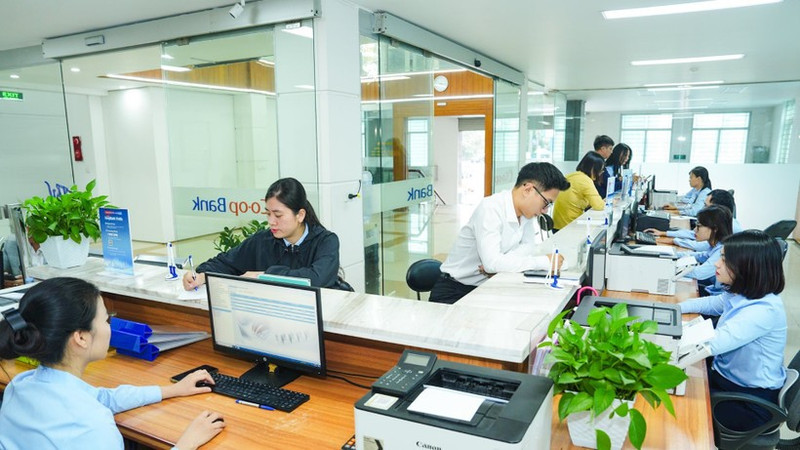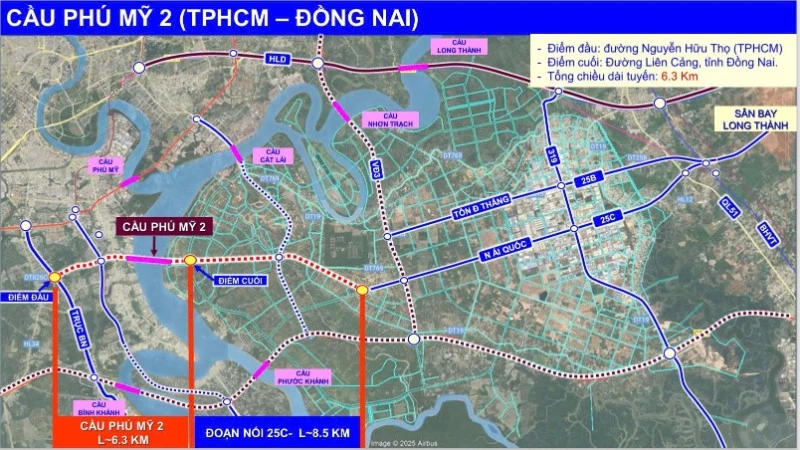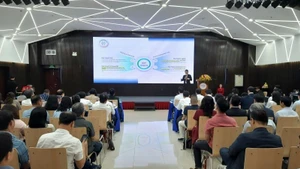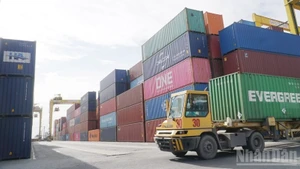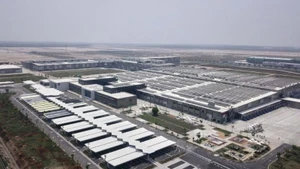According to a recent report released by S&P Global, Viet Nam’s manufacturing sector witnessed an improvement at the beginning of the fourth quarter, with the Purchasing Managers’ Index (PMI) rising to 54.5 points in October, the highest level since July 2024. This remarkable increase was driven by strong rises in both output and new orders.
Enhancing capital flows to support production and business
The macroeconomic picture over the first ten months of 2025 shows recovery in both supply and demand. According to the National Statistics Office, the index of industrial production (IIP) rose by around 9.2% year-on-year, with the manufacturing sector remaining the key driver with growth of 10.5%.
Total import-export turnover reached approximately 762.4 billion USD, up 17.4%. Of this, exports accounted for 391 billion USD, up 16.2%, while imports reached 371.4 billion USD, up 18.6%.
The trade balance recorded a surplus of nearly 19.6 billion USD, providing a buffer for macroeconomic and exchange rate stability.
Meanwhile, the average consumer price index (CPI) for the ten-month period rose by 3.27%, below the government’s 4% target, creating room for continued credit flows at reasonable interest rates to support production and business activities.
Short-term lending rates for priority sectors currently average 3.9% per year, while medium- and long-term loans range between 6.5% and 8.8% annually, the lowest levels in years.
Can Van Luc, chief economist at BIDV, commented: “By the end of 2025, deposit interest rates are expected to remain broadly stable, with slight increases at certain points; however, overall lending rates should stay low, continuing to support enterprises as they restore production.”
Latest figures from the State Bank of Viet Nam (SBV) show that at the end of September, total outstanding credit had increased by around 13.37% compared with the end of 2024, well above the rate in the same period last year.
At the end of September, total outstanding credit had increased by around 13.37% compared with the end of 2024.
Of total outstanding loans, 78% served production and business activities, in line with the government’s growth priorities.
Total customer loans at 27 listed banks reached around 13.6 quadrillion VND at the end of the third quarter, up 15% compared with the end of 2024. Many banks recorded double-digit growth, reflecting improved capital supply capacity and stronger credit demand.
In many localities, credit has become a direct lever for boosting production. Hai Huong Forestry Company in Ninh Binh Province is a typical example. The company operates across several sectors, primarily in construction timber production, and has recently expanded into a river-in-pond model for fish farming.
“To complete and bring the project into operation at the end of the year, we are in great need of working capital. With an outstanding loan of around 9 billion VND at the Ha Nam Branch of Co-opBank, bank credit has been a reliable source of capital for us for more than a decade,” said company director Lai Van Hai.
The story of Hai Huong demonstrates how credit is reaching the right borrowers, helping to maintain production and create jobs for local workers.
Flexible but controlled credit expansion
Beyond scale, credit flows are also shifting in quality. According to the SBV, by mid-2025, outstanding green credit had reached nearly 730 trillion VND, accounting for 4.3% of total lending, primarily channelled into renewable energy, clean agriculture, and energy-saving projects.
This is a strategic direction enabling the banking sector to work alongside the government in pursuing green growth and sustainable development. Alongside this, digital credit is emerging as an extended arm of the banking system in expanding access to capital.
In the first nine months of the year, cashless payments increased by more than 24% in value, while QR transactions surged by 150%. This has created a transparent data foundation for cash flows, enabling banks to accelerate credit scoring and shorten disbursement times, particularly benefiting small and medium-sized enterprises.
Nguyen Quoc Hung, Vice Chairman and Secretary-General of the Viet Nam Banks Association, said the sector is undergoing a phase of rapid digital acceleration, with more than 95% of transactions at major banks conducted via digital channels and the digital payment ecosystem expanding continuously.
Banks are shifting strongly towards data-driven lending, integrating electronic know-your-customer (eKYC), e-invoices and payment accounts. This marks a breakthrough that enables safe, transparent, and cost-efficient credit expansion. However, the rapid pace of credit growth is also placing pressure on regulatory management.
According to the SBV, at the end of October, real estate credit had grown by around 19% since the beginning of the year, outpacing overall credit growth, mainly concentrated in commercial housing and project renovation.
At the end of October, real estate credit had grown by around 19% since the beginning of the year, outpacing overall credit growth, mainly concentrated in commercial housing and project renovation.
Economist Dinh The Hien warned that real estate credit is rising sharply, but must be closely monitored to prevent capital from shifting into speculation or legally incomplete projects, which may cause liquidity risks.
Meanwhile, Viet Dragon Securities (VDSC) reported that at the end of the third quarter, capital mobilisation at listed banks increased by only 11.4%, much lower than credit growth of about 15%. The widening gap between these two indicators after a brief period of balance in the second quarter suggests that lending is outpacing capital mobilisation capacity.
Rapid credit growth coupled with slower mobilisation may create liquidity pressure, especially towards year-end. With credit expected to continue accelerating, analysts at Vietcombank Securities (VCBS) forecast full-year growth of 18-20%.
Experts at UOB Viet Nam also predict that credit growth may reach 19-20% this year amid stable monetary policy and recovering loan demand, far exceeding the SBV’s target of 16%.
Similarly, Associate Professor Nguyen Xuan Thanh at the Fulbright School of Public Policy and Management said the 18-20% credit growth target for 2025 is entirely achievable, but stressed that quality must accompany quantity, ensuring capital truly flows into value-creating sectors to avoid bad-debt risks.
SBV Deputy Governor Pham Thanh Ha emphasised that the consistent regulatory stance is to maintain low policy rates, keep the exchange rate flexible, focus credit on production, business and priority sectors, while controlling risks in sectors such as real estate and securities.
As the year draws to a close, the SBV has instructed the banking system to monitor macroeconomic developments closely, pursue safe and efficient credit growth, and promptly resolve obstacles so that capital reaches the intended sectors.
